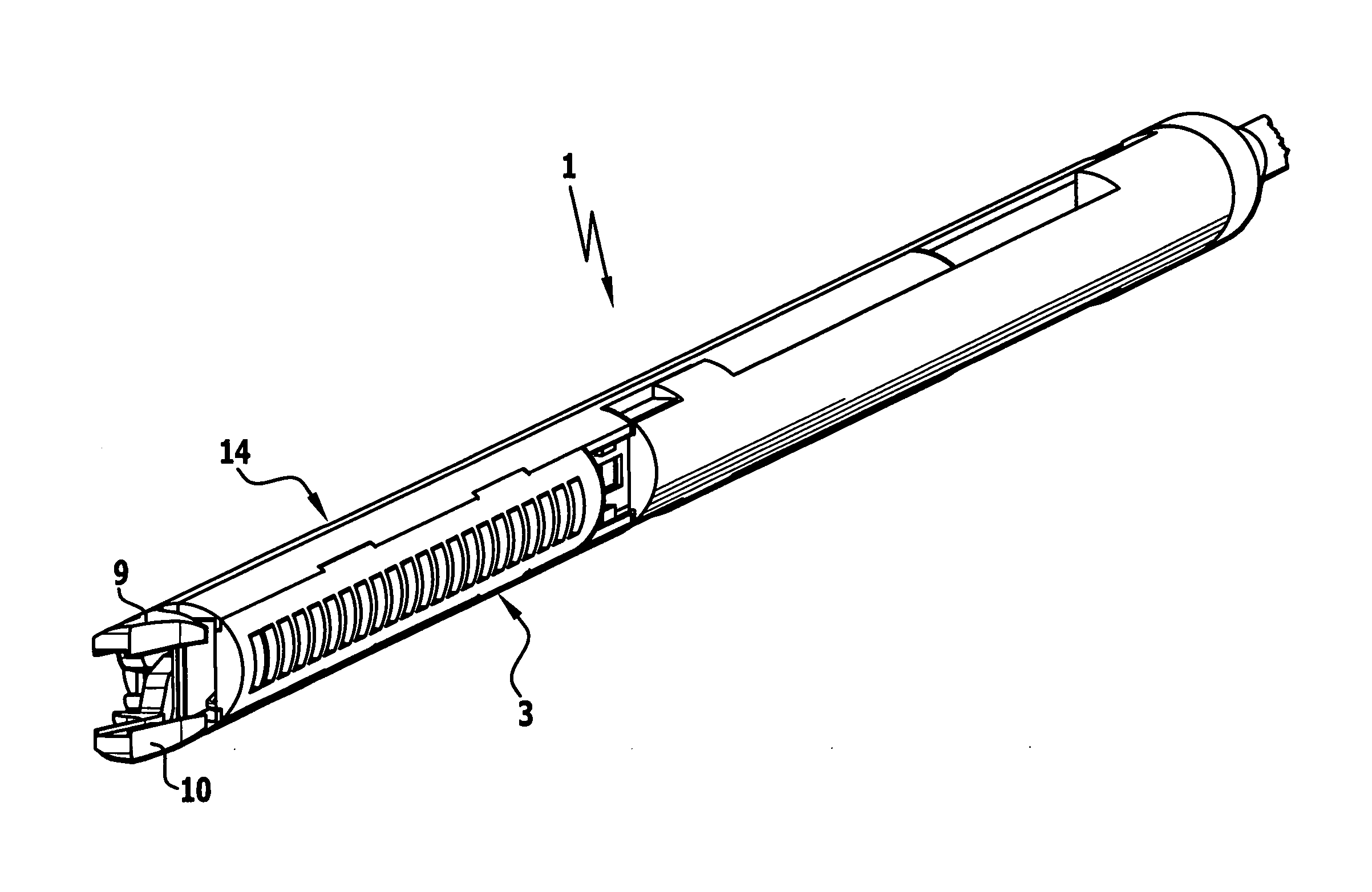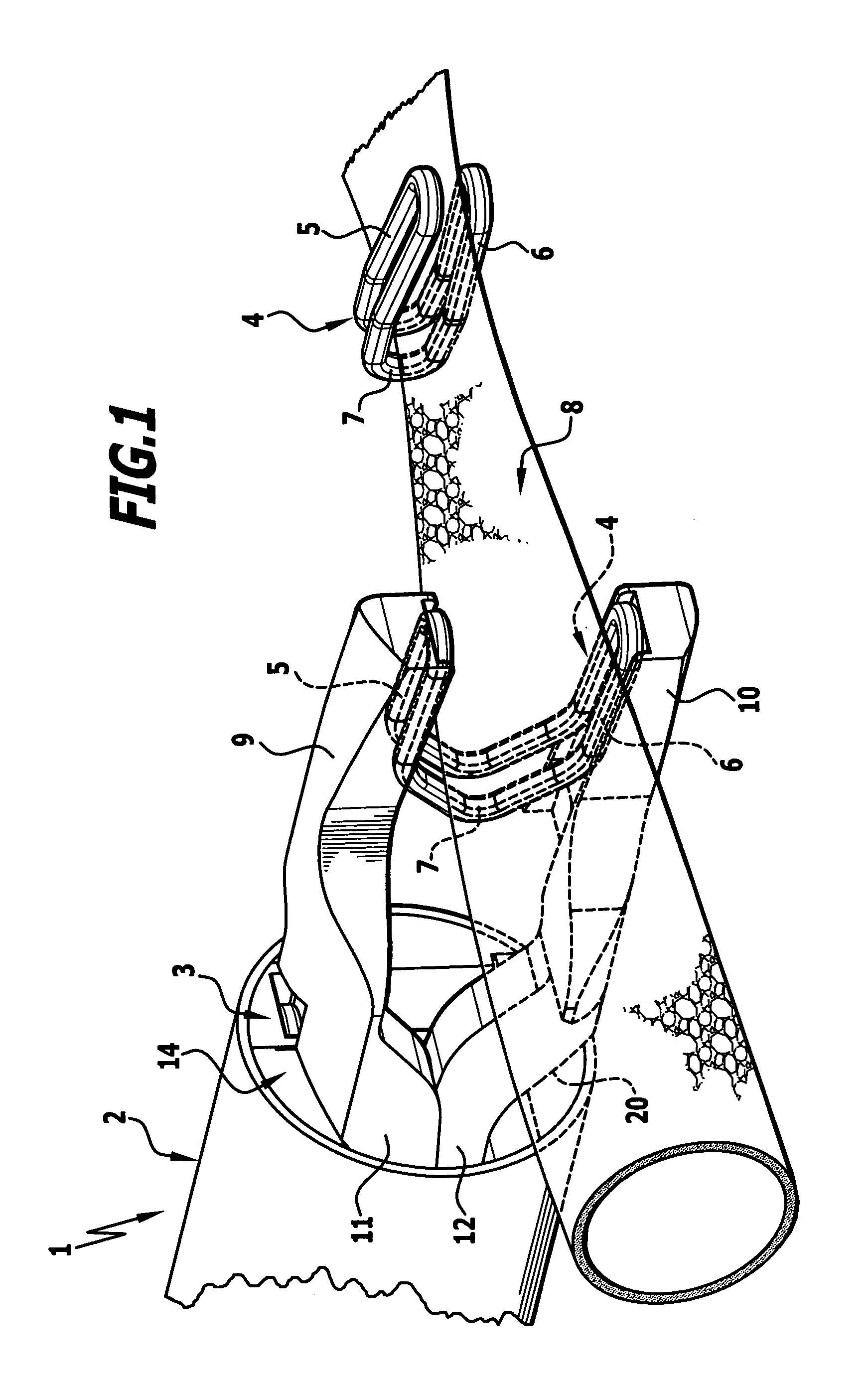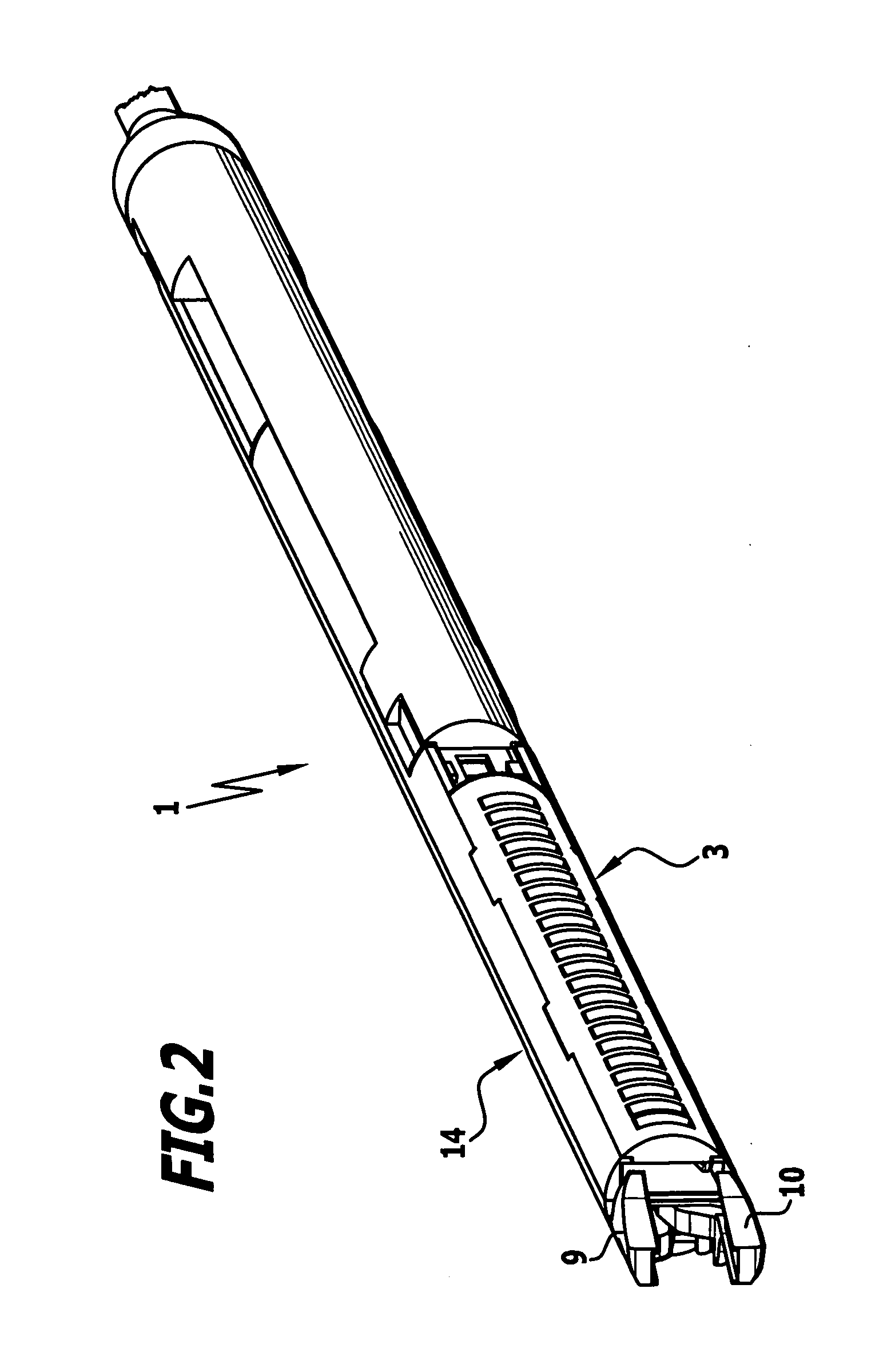Surgical instrument for the placement of ligature clips
a surgical instrument and ligature clip technology, applied in the field of surgical instruments for the placement of c-shaped ligature clips, can solve the problems of restricted arm pivot angle and insufficient space to accommodate ligature clips, and achieve the effect of reducing the size of the instrumen
- Summary
- Abstract
- Description
- Claims
- Application Information
AI Technical Summary
Benefits of technology
Problems solved by technology
Method used
Image
Examples
Embodiment Construction
[0034]The instrument 1 shown in the drawing comprises a tubular barrel 2, of which only the distal end is shown in the drawing. At its proximal end not shown in the drawing, the barrel 2 is connected to a handle, on which activation elements are arranged, by means of which the transmission elements passing through the barrel, e.g. push and pull rods, can be moved, the movement of which can thus be transmitted to the distal end of the barrel 2.
A cartridge 3, which substantially has a semicircular cross-section and in which a plurality of C-shaped ligature clips 4 are arranged, is inserted into the barrel 2 at its distal end. These ligature clips have two legs 5, 6 arranged next to one another and at a spacing from one another, which are connected to one another at their proximal end by means of a bridge section 7. They are made from permanently deformable material, in particular metal, e.g. titanium or a titanium alloy, and the legs 5, 6 can be pressed towards one another out of an o...
PUM
 Login to View More
Login to View More Abstract
Description
Claims
Application Information
 Login to View More
Login to View More - R&D
- Intellectual Property
- Life Sciences
- Materials
- Tech Scout
- Unparalleled Data Quality
- Higher Quality Content
- 60% Fewer Hallucinations
Browse by: Latest US Patents, China's latest patents, Technical Efficacy Thesaurus, Application Domain, Technology Topic, Popular Technical Reports.
© 2025 PatSnap. All rights reserved.Legal|Privacy policy|Modern Slavery Act Transparency Statement|Sitemap|About US| Contact US: help@patsnap.com



